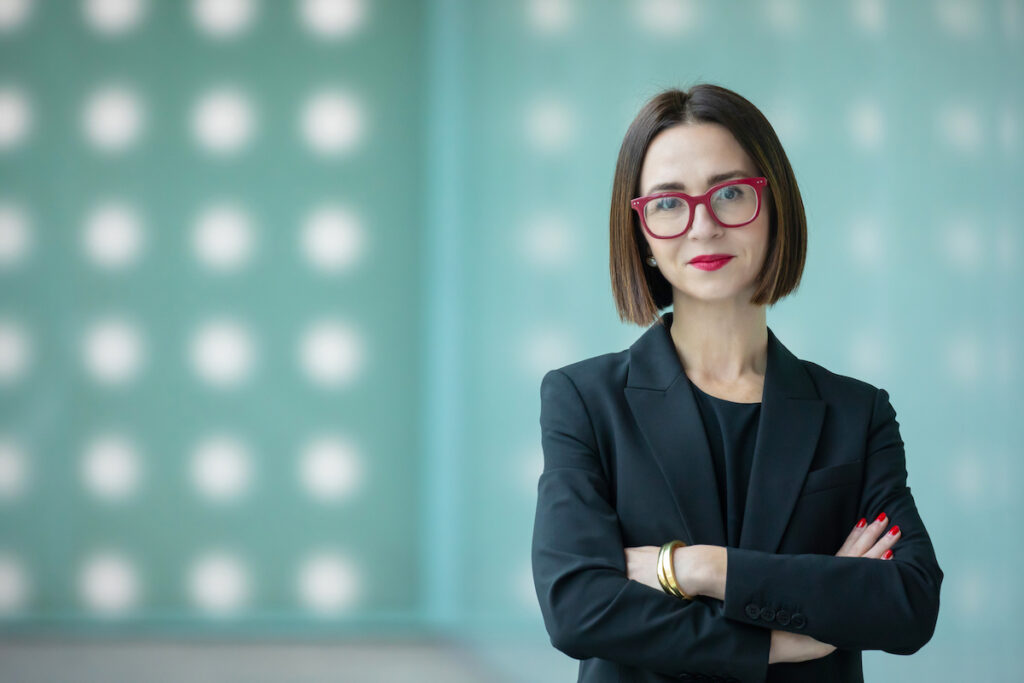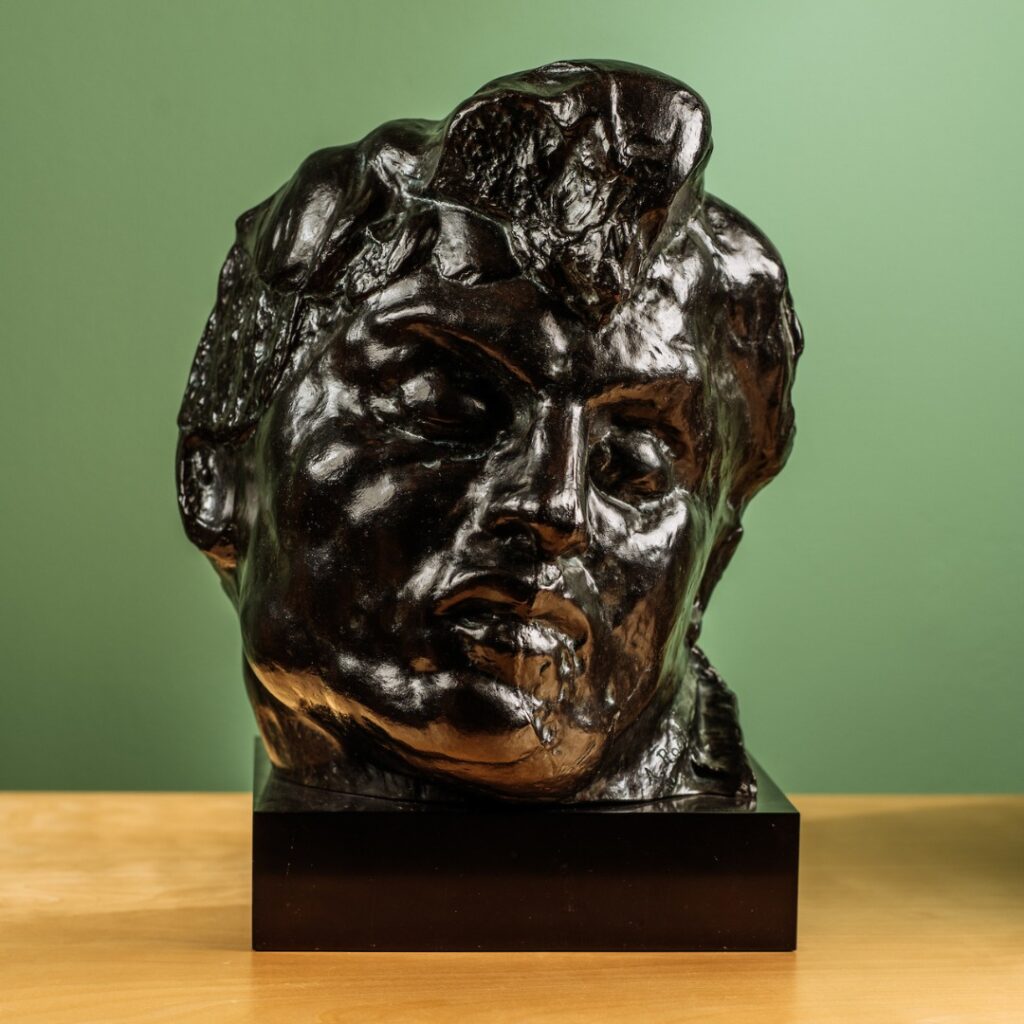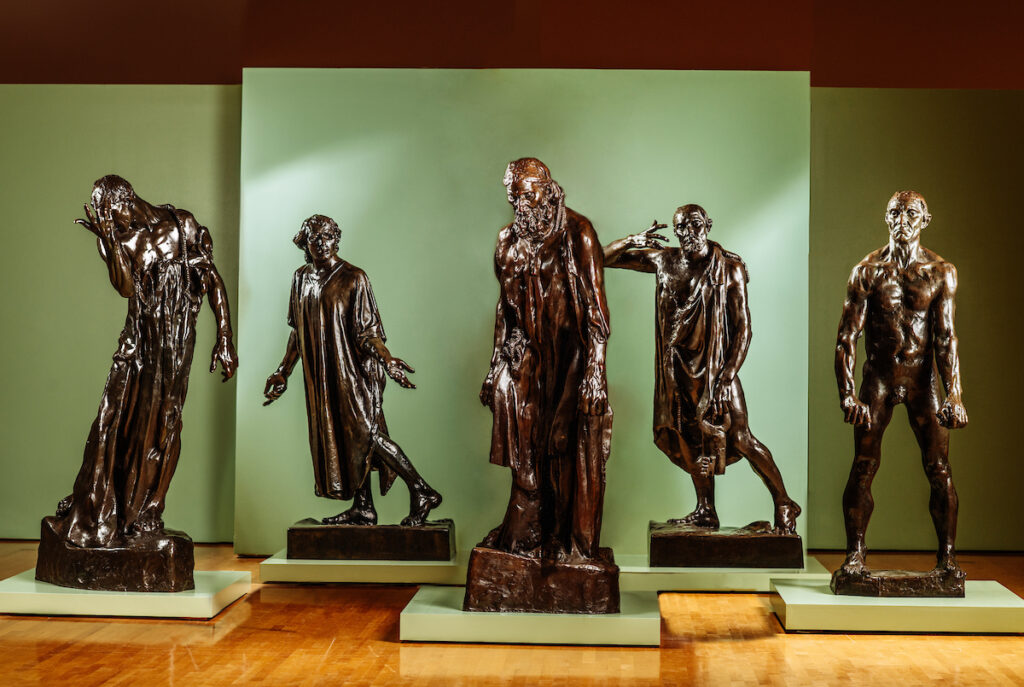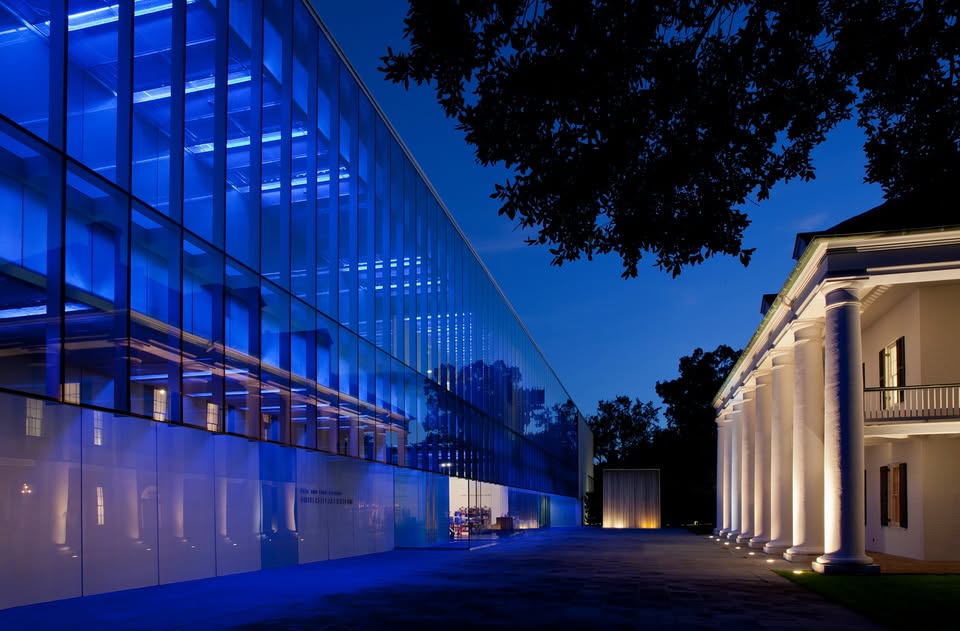Go offline with the Player FM app!
Molly Rowe – Hilliard Art Museum Executive Director
Manage episode 464313855 series 1814016
Molly Rowe, newly appointed Executive director of the Hilliard Art Museum, joins Discover Lafayette to discuss her love of the arts and working with artists. Molly has worked with arts and culture organizations such as the New York City Ballet and Savannah College of Art and Design, and Fortune 500 companies such as Google and The New York Times.
Born and raised in Lafayette, Molly’s mother was an antique dealer; from an very early age, Molly was exposed to art, antiques, antiques, provenance, and the research that goes into collecting and telling stories about objects. She grew up appreciating art and objects, learning about other cultures and people.
At the age of 18, after graduating from the Episcopal School of Acadiana and ready to see the world, she left Lafayette at 18 to attend Cornell University where she earned Bachelor’s degrees in History and French literature. Molly then earned an MBA in Strategic Management from Tulane, and completed graduate work in Art History at Sorbonne University and Ecole Normale Supérieure in Paris.
Molly’s first job was writing for the President and Co-Founder of the Savannah College of Art and Design, Paula Wallace. “It’s an institution that started with a dream of one woman who was an educator and now it is globally recognized. It is one of, if not the, largest private art institution in the world. It is a mission driven arts organization, and I learned so much about how it was run, how to build organizations of that nature, how to inspire people through that.” The experiences Molly gained help define her career.

“Whenever I started working with Paula Wallace, I envisioned myself to be a writer who was going to go on and do doctorate work in literature. I was very always interested in languages and storytelling. But through my work with her at SCAD, I realized that art has it own language and communicates things that words can’t. Through studying art and learning about art and exhibiting art, working with artists, you’re able to transcend time, cultures, and geography.”
Molly shared, “We so often think that being able to create an art object or a painting defines creativity. But some of the most creative people I know are creative in business. I’ve built my career on working with artists and supporting artists and building businesses with them.”
After her work at SCAD, she moved to New York and was employed by consultants who worked with arts organizations, museums, institutions, and galleries based all over the world. She eventually opened her own consulting firm with that same focus, at the intersection of arts, education and business,. Molly worked with over 50 institutions internationally, from the United States to Europe, South America, and Asia. Molly says, “It’s that work that allowed me to consult with incredible organizations such as Google, New York City Ballet, and The New York Times. My work with them was always focused around art and culture. I think so many businesses recognize the power of art and culture; in order to get a product into the hands of people, they have to tap into how their desired audience communicates, what they like, what they read, what they listen to.”
Molly explained, “Being able to tap into an audience’s culture means you’re going to be working with artists. It means you’re going to be working with the people that are creating and building that culture. That’s where I came in, as this sort of middle person, who would help organizations figure out how they were going to bring their product to people. It was always around working with artists. The other side of that was not only making sure it was good for business, but also that it was good for rhe artists. If we look at Louisiana, one of our biggest economies is cultural tourism. We don’t think enough about who is benefiting from that. My job was always making sure that artists were represented appropriately and that were being compensated and rewarded in the right way.”
When Molly moved back to Lafayette during COVID, she had a young daughter. She worked from home with clients and projects scattered all over the country and says, “It was wonderful, but at the same time I wasn’t really connected here; I was in my office at home, with the door closed, working with people that were not here.”
She was also finishing up her MBA at Tulane, and had been asked to serve on the board of directors of Basin Arts. She led a strategy session for Basin Arts, and then Clare Cook introduced her to the Dean of the College of the Arts at UL-Lafayette as they were also looking to perform a strategy session. Molly says, “It was through that introduction and the work I did with the College of the Arts, that someone asked me if I’d be interested in the position of the Executive Director at the Hilliard. It came at a very interesting time as I was just wrapping up my MBA. Serving on the board at Basin Arts brought me into the community here. I’m from here but had been gone for 22 years, so I was actually gone longer than I was from here.”
“Through Clare Cook, Founder and Creative Director of Basin Arts, I was able to reconnect and reroute, to understand how rich the cultural community is here. Clare really opened my eyes to what’s happening here today and also the need for advocates of our culture and bringing experience here instead of needing to leave Lafayette to pursue your career.”
Molly credits the Hilliard’s prior director, Louanne Greenwald, for lifting the organization to the place where it is today, and getting it accredited. “I think what makes the Hilliard very unique is that it’s tied to a university, a research institution. So one of the things I’m thinking a lot about is what does it mean to be an art museum that’s tied to a university in such a rich cultural landscape? What does it mean specifically in Acadiana? How do we communicate with other institutions? What is our role?”
She further stated, “We are deeply rooted where we are. We also have the ability to be in dialogue with artists and cultures from all over the world. So that idea is that we’re rooted in place and also connected globally. That connection is coming through our work in the arts and it’s that balance between where we are physically and who we’re speaking with globally. We hope to grow to be able to strike something that allows us to build our permanent collection as well as to have study and research around art objects that other institutions aren’t able to do as much. And that’s through our connection with the university and the scholarship that we’re able to tap into.”


There are currently three exhibitions on display now, the largest being the Rodin Toward Modernity. Curated by Ben Hickey, with support from the Hilliard Society and the Hilliard Board of Directors, the exhibition consists of 40 iconic sculptures in Rodin’s practice.

Molly says, “Today, Rodin is known as the greatest sculpturer since Michelangelo. But during the time he was practicing, at the turn of the 19th century and into the early 20th, he was not looked upon as such. He was an artist looked at as someone with vulgar taste, bumping up against tradition and doing something new. As we all know, someone who does something new is not always received with open arms at first. So the exhibition looks at Rodin as this figure who reshaped how we think about art, how we look at art, and how he reshaped the possibilities of art. Prior to this moment in art history, art and sculpture were very much figurative. As you walk into the exhibition at the Hilliard, the first thing you see is a grouping of five sculptures. It’s The Burghers of Calais, a monument Rodin was commissioned to do for heroes of the Hundred Years War. But these heroes are shown in despair. They’re shown in complete vulnerability as they were walking to their death. In Rodin’s mind, this is the moment when someone becomes a hero, when they’re putting up their life. It’s the courage and what comes of that, not a moment of glory.”

The Hilliard Art Museum offers a beautiful event space in Lafayette, and also offers the Hayes Town building. Look forward to March for a Spring reception, followed by a free family day in mid-March.
Molly Rowe’s thoughts on talent and young people’s creativity: “Art with kids is so much fun because there are no rules yet. They look at things a lot differently than somebody who’s had an education or had some experience and is kind of confined to this box. It’s fearless. I think your most successful artists are the ones that are fearless, who get up and try again and again. We see them as big name artists, but what we’re not seeing are the 30 years of trial and error that went into it. We see them when they become really big. But they may have had a very long path. It takes determination, that this is what I’m going to do, no matter the criticism, no matter if someone tells me it’s impossible. You see that in children. I like encouraging that and not putting limits on it. By putting barriers on our thinking, by forcing ourselves to call something what everyone else calls it, how are we limiting ourselves?”
The Hilliard recently celebrated 20 years in operation. Located at 710 East Saint Mary Boulevard on UL Lafayette’s campus. It offers 11,000 square feet of gallery space and is the largest exhibition space between Houston and New Orleans. The museum is free for members, faculty and students. Adult admission is $10. It is open Tuesday through Saturday, 10 to 5. For more information, visit https://hilliardmuseum.org/.
Discover Lafayette is proud to showcase Molly Rowe and the Hilliard Art Museum. Best wishes on continued success!
103 episodes
Manage episode 464313855 series 1814016
Molly Rowe, newly appointed Executive director of the Hilliard Art Museum, joins Discover Lafayette to discuss her love of the arts and working with artists. Molly has worked with arts and culture organizations such as the New York City Ballet and Savannah College of Art and Design, and Fortune 500 companies such as Google and The New York Times.
Born and raised in Lafayette, Molly’s mother was an antique dealer; from an very early age, Molly was exposed to art, antiques, antiques, provenance, and the research that goes into collecting and telling stories about objects. She grew up appreciating art and objects, learning about other cultures and people.
At the age of 18, after graduating from the Episcopal School of Acadiana and ready to see the world, she left Lafayette at 18 to attend Cornell University where she earned Bachelor’s degrees in History and French literature. Molly then earned an MBA in Strategic Management from Tulane, and completed graduate work in Art History at Sorbonne University and Ecole Normale Supérieure in Paris.
Molly’s first job was writing for the President and Co-Founder of the Savannah College of Art and Design, Paula Wallace. “It’s an institution that started with a dream of one woman who was an educator and now it is globally recognized. It is one of, if not the, largest private art institution in the world. It is a mission driven arts organization, and I learned so much about how it was run, how to build organizations of that nature, how to inspire people through that.” The experiences Molly gained help define her career.

“Whenever I started working with Paula Wallace, I envisioned myself to be a writer who was going to go on and do doctorate work in literature. I was very always interested in languages and storytelling. But through my work with her at SCAD, I realized that art has it own language and communicates things that words can’t. Through studying art and learning about art and exhibiting art, working with artists, you’re able to transcend time, cultures, and geography.”
Molly shared, “We so often think that being able to create an art object or a painting defines creativity. But some of the most creative people I know are creative in business. I’ve built my career on working with artists and supporting artists and building businesses with them.”
After her work at SCAD, she moved to New York and was employed by consultants who worked with arts organizations, museums, institutions, and galleries based all over the world. She eventually opened her own consulting firm with that same focus, at the intersection of arts, education and business,. Molly worked with over 50 institutions internationally, from the United States to Europe, South America, and Asia. Molly says, “It’s that work that allowed me to consult with incredible organizations such as Google, New York City Ballet, and The New York Times. My work with them was always focused around art and culture. I think so many businesses recognize the power of art and culture; in order to get a product into the hands of people, they have to tap into how their desired audience communicates, what they like, what they read, what they listen to.”
Molly explained, “Being able to tap into an audience’s culture means you’re going to be working with artists. It means you’re going to be working with the people that are creating and building that culture. That’s where I came in, as this sort of middle person, who would help organizations figure out how they were going to bring their product to people. It was always around working with artists. The other side of that was not only making sure it was good for business, but also that it was good for rhe artists. If we look at Louisiana, one of our biggest economies is cultural tourism. We don’t think enough about who is benefiting from that. My job was always making sure that artists were represented appropriately and that were being compensated and rewarded in the right way.”
When Molly moved back to Lafayette during COVID, she had a young daughter. She worked from home with clients and projects scattered all over the country and says, “It was wonderful, but at the same time I wasn’t really connected here; I was in my office at home, with the door closed, working with people that were not here.”
She was also finishing up her MBA at Tulane, and had been asked to serve on the board of directors of Basin Arts. She led a strategy session for Basin Arts, and then Clare Cook introduced her to the Dean of the College of the Arts at UL-Lafayette as they were also looking to perform a strategy session. Molly says, “It was through that introduction and the work I did with the College of the Arts, that someone asked me if I’d be interested in the position of the Executive Director at the Hilliard. It came at a very interesting time as I was just wrapping up my MBA. Serving on the board at Basin Arts brought me into the community here. I’m from here but had been gone for 22 years, so I was actually gone longer than I was from here.”
“Through Clare Cook, Founder and Creative Director of Basin Arts, I was able to reconnect and reroute, to understand how rich the cultural community is here. Clare really opened my eyes to what’s happening here today and also the need for advocates of our culture and bringing experience here instead of needing to leave Lafayette to pursue your career.”
Molly credits the Hilliard’s prior director, Louanne Greenwald, for lifting the organization to the place where it is today, and getting it accredited. “I think what makes the Hilliard very unique is that it’s tied to a university, a research institution. So one of the things I’m thinking a lot about is what does it mean to be an art museum that’s tied to a university in such a rich cultural landscape? What does it mean specifically in Acadiana? How do we communicate with other institutions? What is our role?”
She further stated, “We are deeply rooted where we are. We also have the ability to be in dialogue with artists and cultures from all over the world. So that idea is that we’re rooted in place and also connected globally. That connection is coming through our work in the arts and it’s that balance between where we are physically and who we’re speaking with globally. We hope to grow to be able to strike something that allows us to build our permanent collection as well as to have study and research around art objects that other institutions aren’t able to do as much. And that’s through our connection with the university and the scholarship that we’re able to tap into.”


There are currently three exhibitions on display now, the largest being the Rodin Toward Modernity. Curated by Ben Hickey, with support from the Hilliard Society and the Hilliard Board of Directors, the exhibition consists of 40 iconic sculptures in Rodin’s practice.

Molly says, “Today, Rodin is known as the greatest sculpturer since Michelangelo. But during the time he was practicing, at the turn of the 19th century and into the early 20th, he was not looked upon as such. He was an artist looked at as someone with vulgar taste, bumping up against tradition and doing something new. As we all know, someone who does something new is not always received with open arms at first. So the exhibition looks at Rodin as this figure who reshaped how we think about art, how we look at art, and how he reshaped the possibilities of art. Prior to this moment in art history, art and sculpture were very much figurative. As you walk into the exhibition at the Hilliard, the first thing you see is a grouping of five sculptures. It’s The Burghers of Calais, a monument Rodin was commissioned to do for heroes of the Hundred Years War. But these heroes are shown in despair. They’re shown in complete vulnerability as they were walking to their death. In Rodin’s mind, this is the moment when someone becomes a hero, when they’re putting up their life. It’s the courage and what comes of that, not a moment of glory.”

The Hilliard Art Museum offers a beautiful event space in Lafayette, and also offers the Hayes Town building. Look forward to March for a Spring reception, followed by a free family day in mid-March.
Molly Rowe’s thoughts on talent and young people’s creativity: “Art with kids is so much fun because there are no rules yet. They look at things a lot differently than somebody who’s had an education or had some experience and is kind of confined to this box. It’s fearless. I think your most successful artists are the ones that are fearless, who get up and try again and again. We see them as big name artists, but what we’re not seeing are the 30 years of trial and error that went into it. We see them when they become really big. But they may have had a very long path. It takes determination, that this is what I’m going to do, no matter the criticism, no matter if someone tells me it’s impossible. You see that in children. I like encouraging that and not putting limits on it. By putting barriers on our thinking, by forcing ourselves to call something what everyone else calls it, how are we limiting ourselves?”
The Hilliard recently celebrated 20 years in operation. Located at 710 East Saint Mary Boulevard on UL Lafayette’s campus. It offers 11,000 square feet of gallery space and is the largest exhibition space between Houston and New Orleans. The museum is free for members, faculty and students. Adult admission is $10. It is open Tuesday through Saturday, 10 to 5. For more information, visit https://hilliardmuseum.org/.
Discover Lafayette is proud to showcase Molly Rowe and the Hilliard Art Museum. Best wishes on continued success!
103 episodes
所有剧集
×Welcome to Player FM!
Player FM is scanning the web for high-quality podcasts for you to enjoy right now. It's the best podcast app and works on Android, iPhone, and the web. Signup to sync subscriptions across devices.




